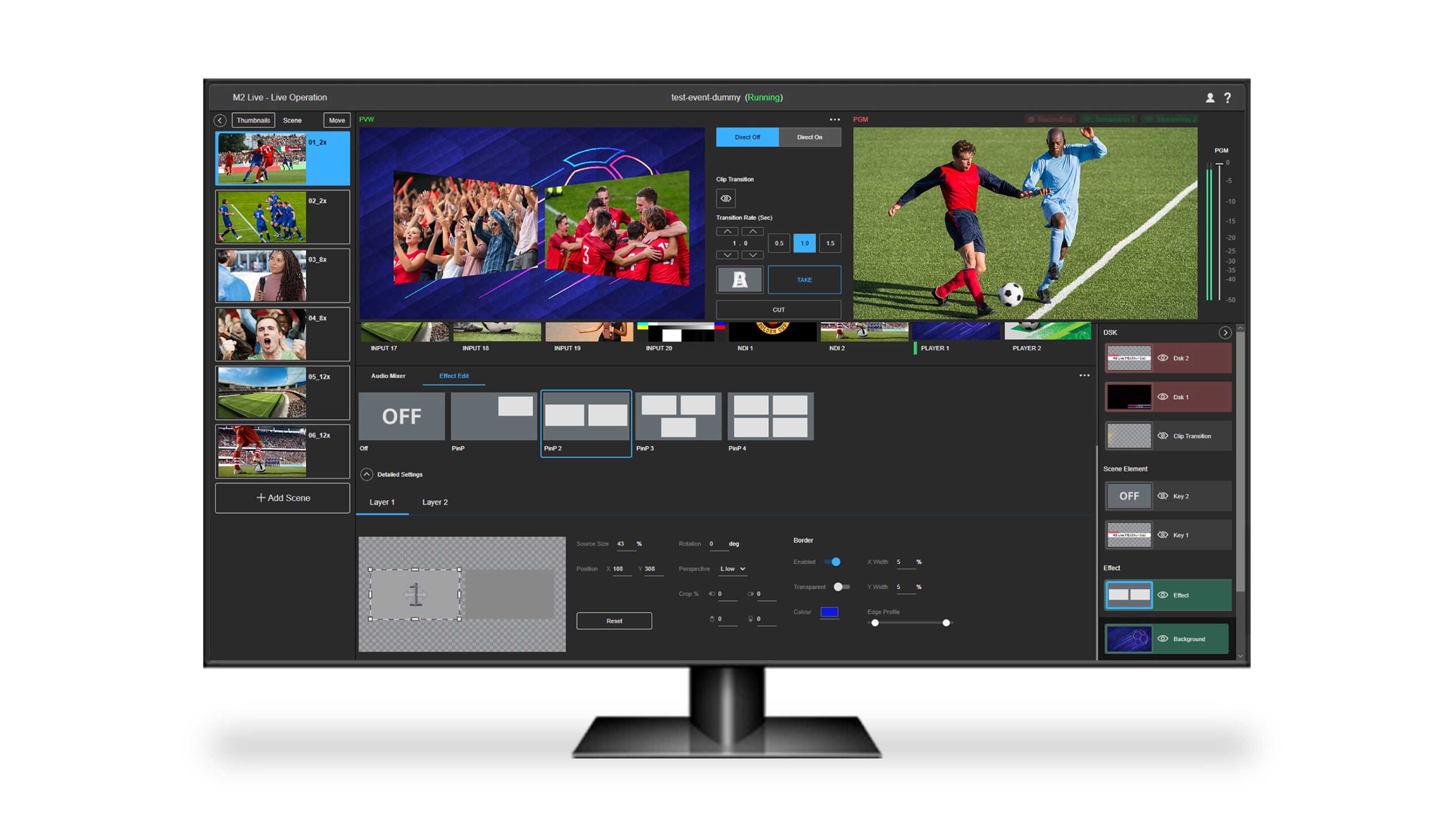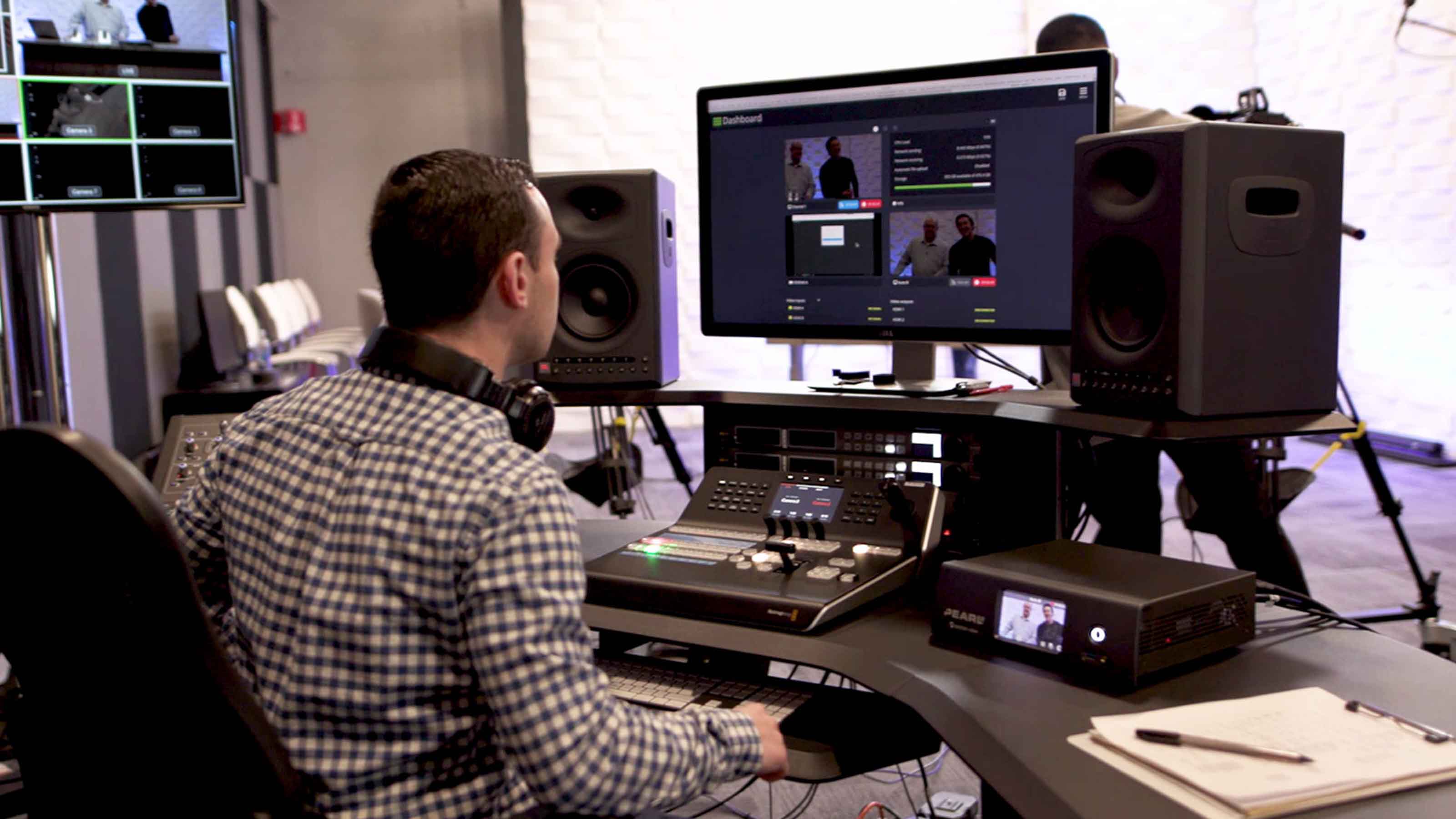While some view cloud-based production as a threat to the traditional systems integration business, many view it as a clear-cut opportunity. Switching, audio mixing, signal distribution, and graphics can all be carried out by production crews through cloud-based platforms.
With that in mind, the emphasis for cloud-based production is placed on control surfaces, the quality of the connectivity, and the applications running on the cloud server. Latency also plays a significant role when deciding if cloud-based production will suit your needs.

“Certain operational elements of a production can tolerate control latency more than others, especially if you are producing live-to-air shows,” said Kevin Henneman, president of KMH Integration. “In many cases, shows for the internet are not 'live' but are recorded, edited, and then posted, so there’s a bit greater tolerance for control delay—not audio and video delay necessarily.”
The ability to communicate can also be a concern for some, with production environments needing to tie in production across various locations, such as a technical director onsite in a traditional control room while the audio or graphics operators work out of a different city. Integrators must demonstrate that the benefits of launching programming quickly and cost-effectively through cloud-based platforms will outweigh the perceived downsides concerning communication, though most teams find ways to adapt.
“These positions need to be able to communicate like they would if they were all located in the same control room,” said Hennerman. “There’s the additional concern that some executive producers have voiced that the spontaneity and creativity of producing a live show together in the same control room can never be accomplished to the same level of satisfaction when people are separated.”

Seamless Solutions
Companies like Sony are producing solutions designed specifically to support cloud production. The recently announced M2L-X, for example, is a software-based switcher for remote-based live production. You can switch audio and video, insert graphics, and more on prem using COTS equipment or in a Virtual Private Cloud (VPC). For more flexibility, it can be used as a standalone software-based switcher via its on-screen GUI or be used in conjunction with a tactile Sony ICP-X control panel—or even used with third-party controllers like Elegato's Stream Deck.
Despite manufacturer support, cloud-based remote production is not necessarily the instant remedy it may seem to be, and it may not be adequate for every production or workflow challenge. The transition requires appropriate skill and strategy, as well as extensive pre-planning from the production and technical standpoint.

“Combining guests from across the country or world becomes easy when the production itself is hosted in the cloud, allowing for very low latency access to ISO feeds from Microsoft Teams or Zoom meetings with tools like Epiphan Connect,” said Julian Fernandez, director of product marketing for Epiphan. “However, cloud production tools don’t come without their own set of challenges. While they alleviate the worries about local bandwidth and hardware capacity, they still require sufficient capture and encoding systems on the edge to deliver video into the cloud production tool.”
It’s important to know exactly what you’re getting into when embracing cloud-based remote production, or you could end up with expensive bills and growing service fees you were not anticipating. “The biggest challenge many companies face is not having a solid cloud migration plan to make sure they receive all the benefits while avoiding many of the roadblocks,” added Henneman.
“Cloud production is not going away; it’s only going to increase, so we need to embrace it, educate ourselves, and then help our customers learn how to use the cloud effectively for their long-term benefit.”
Kevin Henneman, KMH Integration
One of the leading choices to transmit video and audio signals from various locations to the cloud is NDI, as its minimal latency provides onsite and remote teams the opportunity to communicate virtually in real time. This allows production teams to decentralize their studio, with directors, video mixer operators, graphics, commentators, and audio mixers being able to contribute to the same production no matter their location. By offering bidirectional controls and metadata exchange, NDI allows team members to participate actively in all aspects of the production process, adjusting and supplying instant feedback.
[Editorial: Can NDI Become Ubiquitous?]
“NDI is the most effective way to connect all these sources in a seamless and instant way,” said Nick Mariette, director of product management of NDI with Vizrt Group. “This year, we’re answering the requirements of many productions by enhancing image quality, color depth, and catering to even more broadcast and content creation use cases. NDI is developing to become the fabric of remote workflows at an infrastructural level and will continue to evolve.”

Ease of use and efficiency have driven the growth of NDI adoption, with NDI seamlessly connecting and synching sources to the workflow. It allows productions to scale up without being impacted by physical limitations and maintain high production values from remote locations, seamlessly integrating with industry software and hardware solutions.
“Any NDI-enabled product is plug-and-play, making any workflow easy and seamless to operate, even without networking knowledge,” said Mariette. “This instant discovery and registration are vital and remove the limits to video connectivity.”
Pivot to Recurring Revenue
“Cloud production is not going away; it’s only going to increase, so we need to embrace it, educate ourselves, and then help our customers learn how to use the cloud effectively for their long-term benefit,” said Henneman.
When turning to cloud-based production, system integrators will likely have to adapt their business model from a large payment for a single engagement to payments being spread out over an extended period. This requires substantial changes to the client relationship, including continuous billing and follow-up. With software-defined models, integrators are no longer selling a piece of equipment—instead, it's a subscription or license that plays out over an extended period coupled with providing the underlying supporting platform.

"It's a significant model shift for most system integrators in AV, production, and even in IT, and requires a lot of business planning, because otherwise it could damage many integrators," explained Dave Van Hoy, president of Advanced Systems Group. "Cloud's a big pivot for system integrators, mostly because the business models change very dramatically. As an industry, we're better at handling technology changes than business changes."
[Cloud Power: Decisions, Decisions]
Those looking to make the business model pivot need to establish that first relationship with the cloud provider, rather than the client engaging with them and bypassing the integrator altogether, leaving them with the option to deliver only other services. Registering this opportunity with the cloud provider upfront guarantees you a horse in the race.
"It's this recurring revenue model that people need to get their heads wrapped around and realize that a cloud-based workflow could be beneficial," said Jeff Sengpiehl, CTO and chief technologist with Key Code Media. "I'm getting 12 cents on my commission for these three months, and then suddenly, everything spikes because they started using it like crazy. That's the piece they are realizing. It's not your father's on-prem workflow."
Costs and Customer Care

Many integrators believe production environments will be entirely run through the cloud apart from a few transducers and monitors onsite—and the critical question is how quickly we can get there. Sengpiehl believes that will all depend on the cloud's overall costs.
"One of the things that we've run into is a lot of clients will say, I'd like to call up cloud provider X because I want to negotiate with them about our costs," he explained. "But the cloud provider doesn't care. It doesn't do anything for a cloud provider to say we support this workflow. It is completely opposed to the way we've always thought. We're doing cool stuff, so you should want to do business with us and give us a lower price point. That doesn't play with the cloud folks."
Cloud-based production has forced people to think differently about workflows. Integrators can no longer build a system and hand it over. Cloud is one of many workflow options, with traditional on-prem or hybrid options available depending on the client's needs. This is where the integrator needs to deliver the appropriate guidance.
"It's about becoming an integral part of the customer's operational workflow and long-term creative strategy," Henneman noted. "Someone can have more than one workflow for different content and programming needs. More important than ever, our role as integrators is educating customers and determining if their infrastructure is flexible enough to adapt and scale as they grow and their needs change."

